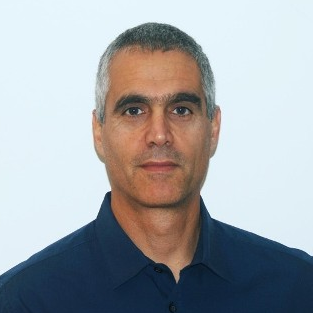Oxygen Therapy
A special issue of Biomolecules (ISSN 2218-273X). This special issue belongs to the section "Chemical Biology".
Deadline for manuscript submissions: closed (30 April 2021) | Viewed by 63693
Special Issue Editors
Interests: synaptic transmission; synaptic plsaticity; super resolution microscopy; neurodegenerative diseases; Alzheimer’s disease; Parkinson’s disease
2. Sackler School of Medicine and Sagol School of Neuroscience, Tel-Aviv University, Tel-Aviv, Israel
Interests: regeneration; brain; hyperbaric medicine; physiology
Special Issue Information
Dear Colleagues,
Oxygen is vital for normal cell metabolism. Oxygen therapy is the use of oxygen as a medical treatment. Air usually consists of 21% oxygen by volume, while oxygen therapy increases oxygen by up to 100% or increases oxygen solubility in the blood and tissues by elevating atmospheric pressure. The use of oxygen in the clinic is common for centuries and is considered one of the most effective and safe medicines needed in health systems, according to the World Health Organization's List of Essential Medicines. In order to increase oxygen-delivered dosages and their relative concentrations, the environmental pressure can be increased. For example, to enhance the amount of oxygen dissolved in the body’s tissues, hyperbaric oxygen therapy (HBOT) including the inhalation of 100% oxygen at pressures exceeding one atmosphere absolute (1 ATA) needs to be used. Historically, HBOT has been applied worldwide, mostly for chronic non-healing wounds. In recent years, growing evidence related to the regenerative effects of HBOT has emerged. The combined action of both hyperoxia and hyperbaric pressure leads to significant improvement in tissue oxygenation while targeting both oxygen and pressure-sensitive genes, resulting in improved mitochondrial metabolism with anti-apoptotic and anti-inflammatory effects. Moreover, the intermittent increase of oxygen concentration activates many of the mediators and cellular pathways that are usually induced by hypoxia but not hazardous hypoxia—termed the hyperoxic–hypoxic paradox. Among others, the intermittent hyperoxic exposure during HBOT can affect the levels of hypoxia-inducible factor 1-alpha (HIF-1a), vascular endothelial growth factor (VEGF), and matrix metalloproteinases (MMP) activity, induce stem cell proliferation, augment circulating levels of endothelial progenitor cells (EPCs) and angiogenesis factors, as well as induce angiogenesis and improve blood flow. In addition to the stimulation of EPCs, HBOT can decrease the inflammatory response in endothelial cells mediated by TNF-alpha, and thus promote vascular recovery. Recently, HBOT also been shown to improve acute neurological conditions like stroke and traumatic brain injury and alleviates chronic conditions such as vascular dementia. In addition, both animal and human studies have demonstrated the beneficial effects of HBOT on mitochondrial function.
This Special Issue, entitled “Oxygen Therapy”, will feature exciting novel studies in this area as well as stimulate new avenues of research into the biological functions of oxygen and the hyperoxic–hypoxic paradox, its underlying mechanisms, and the potential application of its use as a novel therapeutic approach.
Prof. Uri Ashery
Prof. Shai Efrati
Dr. Ronit Shapira
Guest Editors
Manuscript Submission Information
Manuscripts should be submitted online at www.mdpi.com by registering and logging in to this website. Once you are registered, click here to go to the submission form. Manuscripts can be submitted until the deadline. All submissions that pass pre-check are peer-reviewed. Accepted papers will be published continuously in the journal (as soon as accepted) and will be listed together on the special issue website. Research articles, review articles as well as short communications are invited. For planned papers, a title and short abstract (about 100 words) can be sent to the Editorial Office for announcement on this website.
Submitted manuscripts should not have been published previously, nor be under consideration for publication elsewhere (except conference proceedings papers). All manuscripts are thoroughly refereed through a single-blind peer-review process. A guide for authors and other relevant information for submission of manuscripts is available on the Instructions for Authors page. Biomolecules is an international peer-reviewed open access monthly journal published by MDPI.
Please visit the Instructions for Authors page before submitting a manuscript. The Article Processing Charge (APC) for publication in this open access journal is 2700 CHF (Swiss Francs). Submitted papers should be well formatted and use good English. Authors may use MDPI's English editing service prior to publication or during author revisions.
Keywords
- Hyperbaric oxygen therapy
- Hyperoxic–hypoxic paradox
- Mitochondria
- Tissue regeneration
- Angiogenesis
- Neurogenesis
- Anti-inflammation
- Stem cells
- Brain injury
- Brain disorders
- Epigenetic








